Parts Packaging
Logas aims at reducing setup and in-process times, and completely eliminating
materials handling to assure the reliability of assembled PCB’s. ESD requirements
are strictly observed. However, good practice needs to be adopted when parts meant
for assembly are sent to Logas.
Logas recommends the use of appropriate ESD bags, containers, reels and sticks for
handling parts to assure the reliability of electronics products. The products not
handled properly may not fail at our customers' test rooms only to fail later in
field. There are costs associated with these failures and Logas is committed to
eliminating these costs by preventing the failures.
When parts are sent to Logas, the following requirements need to be observed:
a. Extra leaders and tapes: For parts on
reels, it is recommended that at least 16” of tape and 6” of leads be left unused.
This is required for feeder attachment.

Fig. 6: Reels with extra tape and leads
b. Matching ESD trays: Use ESD trays with partitioning
that matches the shape of the parts. This prevents the parts from getting damaged
on slight impact. It is also recommended that parts in trays follow uniform orientation.
The robots may not check for orientation hence good practice should be adopted in
this regard. See figure 7.
When two trays with different partitioning are used to hold parts together, the
probability of parts leads or even entire parts getting damaged is very high. This
results from movements of parts inside the package which is exactly what the package
is meant to prevent. The damaged leads will not pass component recognition test
by the placement robots bottom vision cameras. See figure 8.
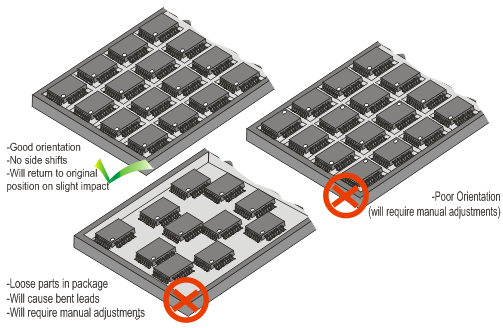
Fig 7: ESD trays with partitioning to hold parts in transit and parts placed with
orientation.
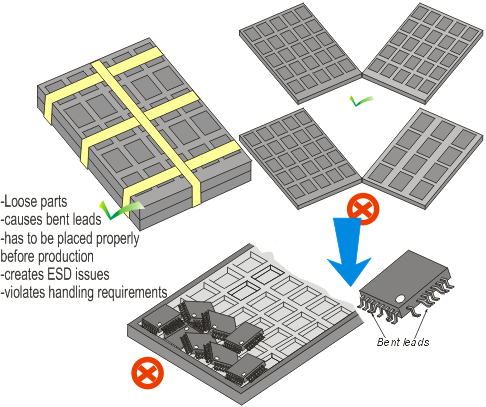
Fig 8: Damaged leads created by use of non-matching ESD trays.
c. Proper alignment of parts inside tapes: Logas suggests
that parts arrive at production plant in their original packaging from parts suppliers.
However, clients may decide to repackage parts for cost or availability reasons.
In such situations, Logas suggests that those parts be clearly marked or the information
indicated on the kit summary documentation which usually accompanies the assembly
kit to Logas production facility. Inspection of repackaged parts revealed occurrence
of wrong polarities and multiple part types in a single reel. This will normally
require additional inspection be carried out on the reels before they are programmed
for placement. In other cases it was observed that parts are reeled with tapes that
are meant for a different sized component. This causes pickup and placement problems.
See figure 9.
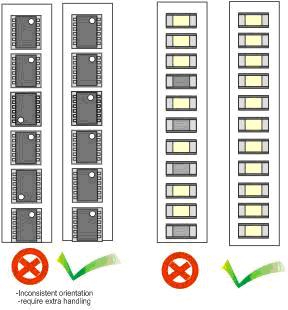
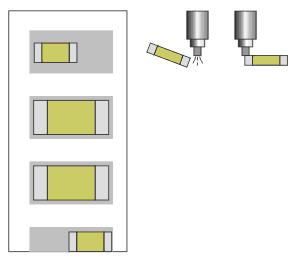
Fig 9: Repackaged parts with poor orientations and wrong tape sizes.
d. Parts labeling Logas quality management system requires
the identification of customer supplied equipment and materials for traceability.
The basic information expected for each part package include the following: - Part
number - Assembly No. (including revision if necessary) - Quantity - Work order/Purchase
order number See figure 10.
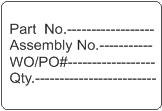
Fig 10: Recommended Part label.
|